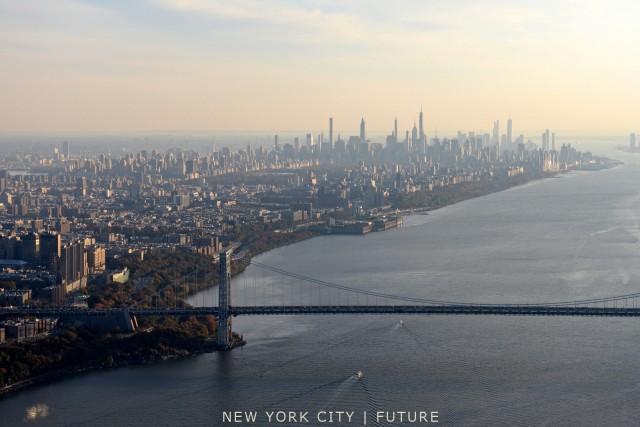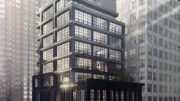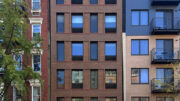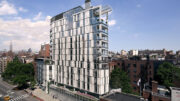Not since the 1920s has New York City’s skyline undergone changes as dramatic as today’s, and now YIMBY has another set of future renderings, courtesy of illustrator Xoltage. The images depict Manhattan’s skyline circa 2023, and the changes between now and then will be significant, especially across Midtown.
The most notable takeaway is the Empire State Building’s newfound position, several notches below both the 57th Street giants and One Vanderbilt. Until the rise of 432 Park Avenue earlier this year, the ESB was the tallest skyscraper in Midtown, with a pinnacle 1,250 feet above the street below.
By the time 2018 rolls around, the building will have been bumped down another four places, coming in sixth on the overall Midtown skyline. 217 West 57th will top the list at approximately 1,775 feet, followed by One Vanderbilt (1,511 feet), 432 Park and 111 West 57th Street (1,398 feet each), and 30 Hudson Yards (1,253 feet).
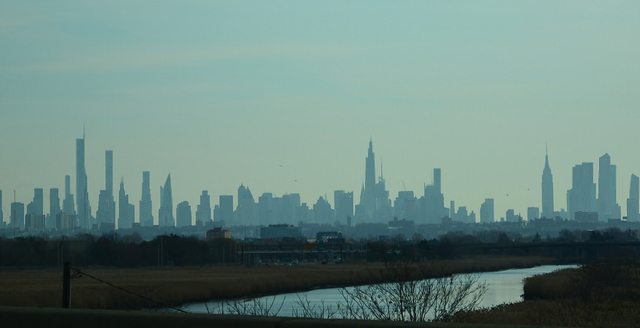
NYC Skyline in 2023, original image by Corey Best, composite by Voltage, high-res at link
One Vanderbilt’s impact on the skyline will be especially powerful, and results in a 1920’s-esque silhouette when viewed from the west. The building’s pinnacle will sit atop a trio of spires, the other two being the Bank of America Tower at 1,200 feet, and the Chrysler Building at 1,050 feet.
This will offer a stark visual contrast to the evolution of 57th Street; the corridor’s profile will be dominated by the flat-topped 432 Park Avenue and 217 West 57th Street. While the latter may have a nearly 300-foot spire atop its roof, its appearance will be most notable for sheer bulk, echoing Vinoly’s creation to the east.
The above renderings miss a few developments that will likely rise prior to 2023, including 1 Manhattan West, 3 Hudson Boulevard, and 45 East 22nd Street, but for the most part the representation closely matches the city’s current slate of supertalls (or near-supertalls) in the construction or proposal process.
A chart generated from CTBUH data verifies the historic significance of upcoming alterations to the skyline. For the first time since the 1960s, the Manhattan skyline will be dominated by dramatic spokes rather than man-made plateaus, harking back to the pre-war cityscape. The annual number of new 150M+ (or 492’+) skyscrapers has stayed relatively constant since a steep rise in the early 2000s, however the average height of such buildings has seen a sharp increase.
As a result of the surge in supertall construction, the number of 1,000’+ buildings in New York City may triple by 2020, with new structures spanning different uses and various price-points. The takeaway is a signal that the new boom is not an error of market exuberance, but rather a fundamental change in cost-feasibility that is finally allowing developers to build taller towers on a more widespread basis, enabled both by technology and by the continued and worsening squeeze on Manhattan land prices.
Talk about this topic on the YIMBY Forums
For any questions, comments, or feedback, email [email protected]
Subscribe to YIMBY’s daily e-mail
Follow YIMBYgram for real-time photo updates
Like YIMBY on Facebook
Follow YIMBY’s Twitter for the latest in YIMBYnews

